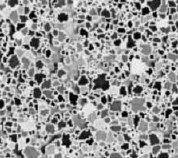Characterizing owl nest trees with lidar
 Tuesday, January 24, 2012 at 10:52AM
Tuesday, January 24, 2012 at 10:52AM  spotted owl, courtesy of the SNAMP owl team: http://snamp.cnr.berkeley.edu
spotted owl, courtesy of the SNAMP owl team: http://snamp.cnr.berkeley.edu
García-Feced, C., D. Tempel, and M. Kelly. 2011. LiDAR as a tool to characterize wildlife habitat: California Spotted Owl nesting habitat as an example. Journal of Forestry 108(8): 436-443
We demonstrate the use of an emerging technology, airborne light detection and ranging (lidar), to assess forest wildlife habitat by showing how it can improve the characterization of California spotted owl (Strix occidentalis occidentalis) nesting habitat. We used lidar data, validated in the field, to measure the number, density and pattern of residual trees (≥ 90 cm dbh) and to estimate canopy cover within 200 m of four nest trees. Nest trees were surrounded by large numbers of residual trees and high canopy cover. We believe that lidar would greatly benefit forest managers and scientists in the assessment of wildlife-habitat relationships and conservation of important wildlife species.
 forests,
forests,  last chance,
last chance,  lidar,
lidar,  snamp
snamp 


